By Alex Jones
AS THOUSANDS of brave soldiers stormed the Normandy Beaches under a hail of gunfire 75 years ago, incredible photos show how the Allied air forces kept German reinforcements at bay, destroyed Nazi weapon and munitions factories, and conducted devastating bombing runs on Hitler’s defensive strongholds in a powerful new book.
Striking shots from 1944 – including the build up to the D-Day Landings, the invasion itself, and its deadly aftermath – include US bombers striking a Nazi bunker on the French coast; an allied aircraft wreaking havoc at a German oil refinery; and RAF Typhoon emblazoned with ‘D-Day Stripes’, a black and white paint scheme which helped identify allied aircraft and reduce the chances of getting shot down by friendly fire.
Another poignant shot shows visibly relieved American GIs looking to the skies after spotting their airborne guardian angels during Operation Overlord, the epic allied assault to liberate German-occupied Europe.
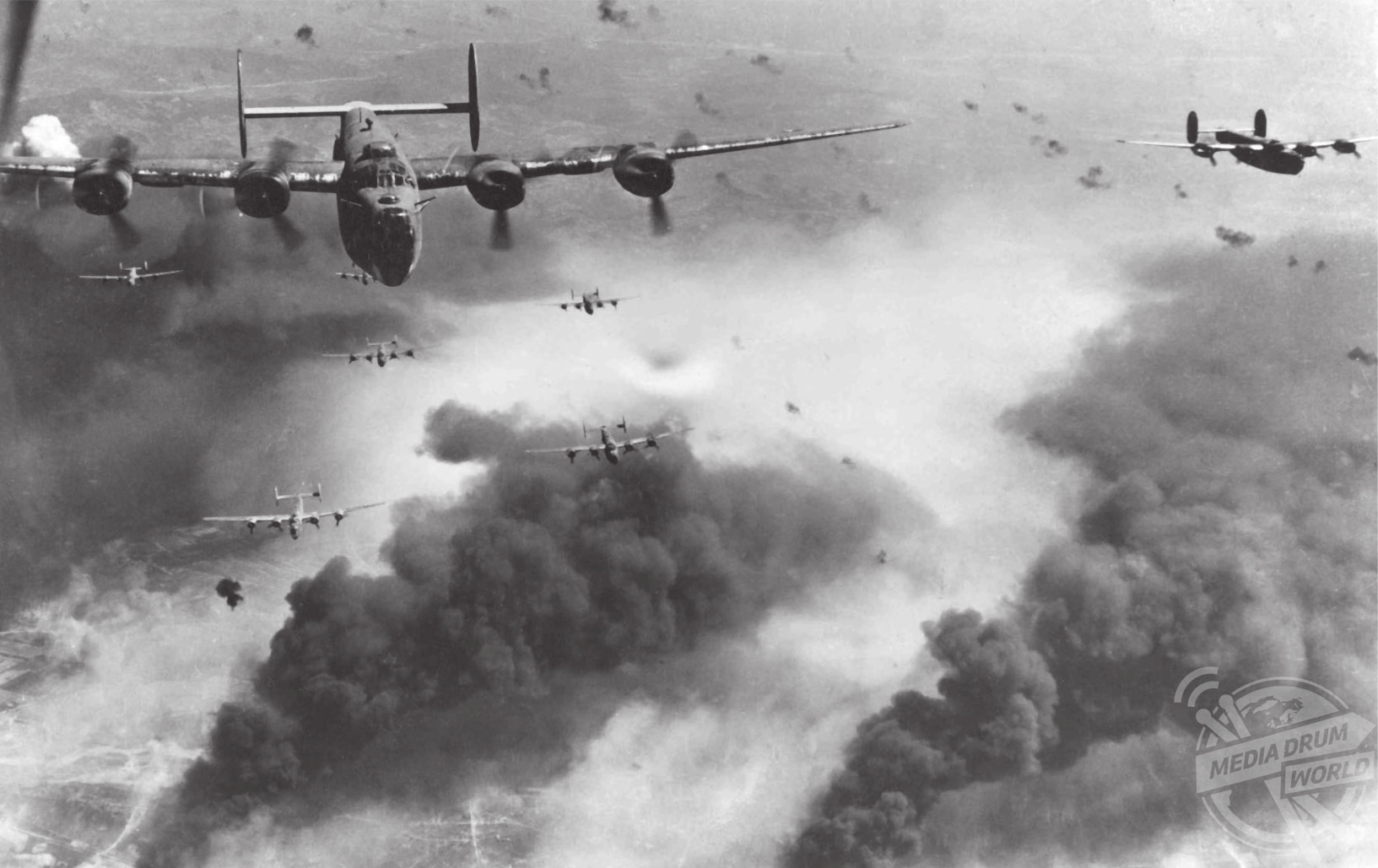
The remarkable shots are included in Anthony Tucker-Jones’ latest book The Normandy Air War 1944 – an enthralling account of the huge air campaign provided by the Allied armies in the preparations for the invasion of France, actions which are frequently overshadowed and overlooked due to the dramatic and bloody fighting on the ground.
“For many the airborne landings in Normandy on June 6, 1944 heralded the start of Overlord, though in reality the air attacks had commenced way before this,” explained military historian Tucker-Jones.
“In fact, the Allies had gained air superiority over the Luftwaffe in 1943 and never lost it. From that point, under the Pointblank directive, the RAF and the United States Army Air Force (USAAF) had been conducting preliminary operations that would contribute to Overlord’s resounding success. Key amongst these was concentrating heavy bomber attacks on German fighter factories. This forced the Luftwaffe to withdraw forces from the front line to defend the factories. What followed was a bloody battle of attrition that the Germans pilots slowly lost, although ironically fighter production continued to increase.
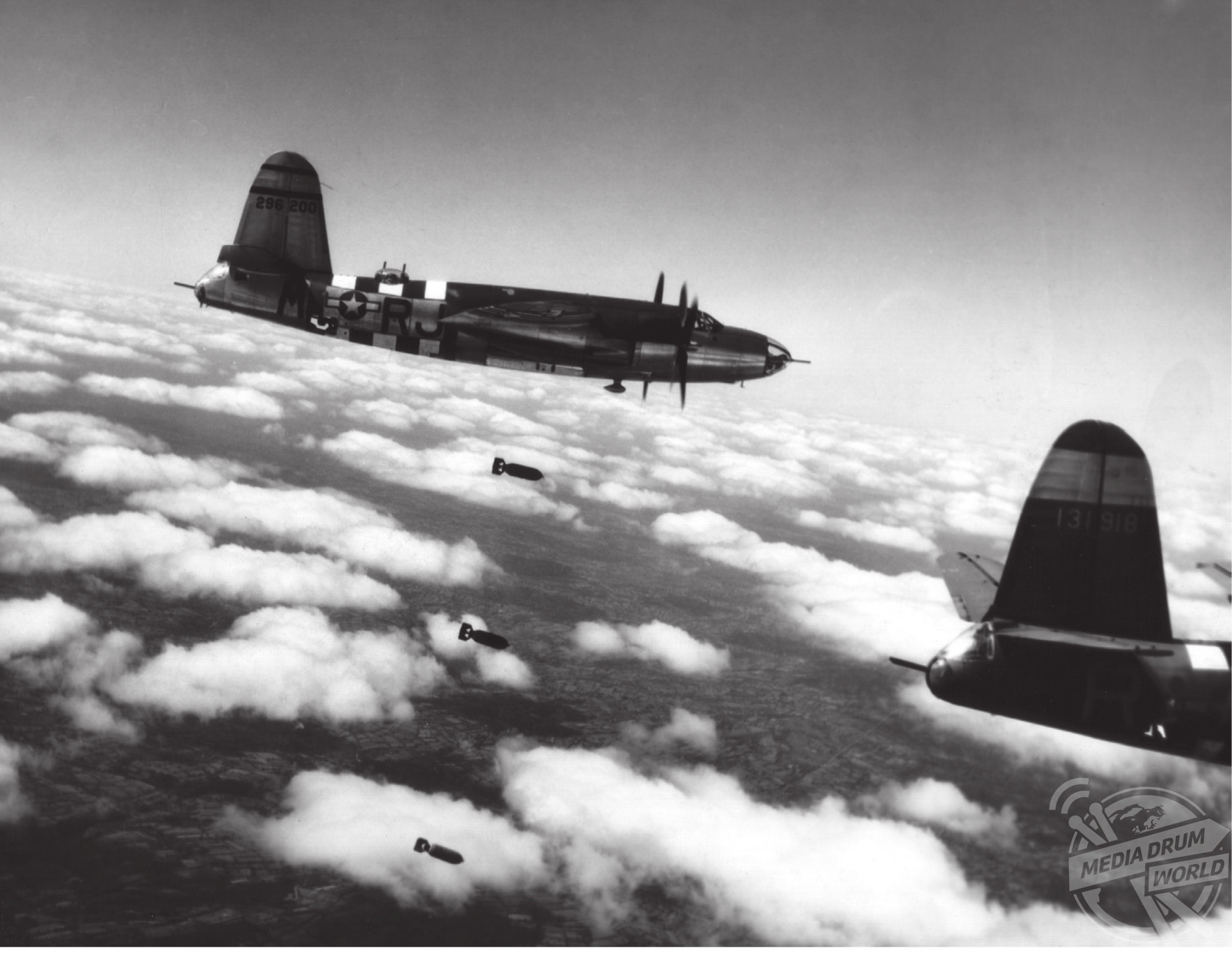
falling through patchy cloud. Mediadrumimages/AnthonyTucker-Jones/PenAndSwordBooks
“For the Allied air force commanders with their tactical and strategic fleets of aircraft, the dilemma had been how best to support D-Day. The bomber barons, with their vast armadas of heavy bombers, felt they should continue to pound Germany’s factories and distract the Luftwaffe. At some point the German armed forces would run out of weapons and collapse – but the problem with this strategy was that it was simply taking too long. US President and Allied Supreme Commander Eisenhower wanted an aerial campaign that would directly contribute to the ground war. While getting the tactical air forces to help was not a problem, the commanders of the strategic air forces dragged their feet like petulant children, resulting in much acrimony.”
The Normandy Air War 1944 examines the often fraught relationship between allied leaders, and a difference of opinion about which strategy would be best to bring the war to a close – continue bombing Germany’s industry into the ground, or providing cover and a clear path for ground forces. It was a discussion which tested the UK and US’ diplomatic services to their extreme, with several heated ‘ego-driven’ clashes between key officials including RAF’s Air Chief Marshal Sir Arthur ‘Bomber’ Harris, and USAAF General Carl Spaatz.
“At the beginning of 1944, after much debate, the decision was made to redirect allied air power to support the Overlord Air Plan,” added Tucker-Jones.
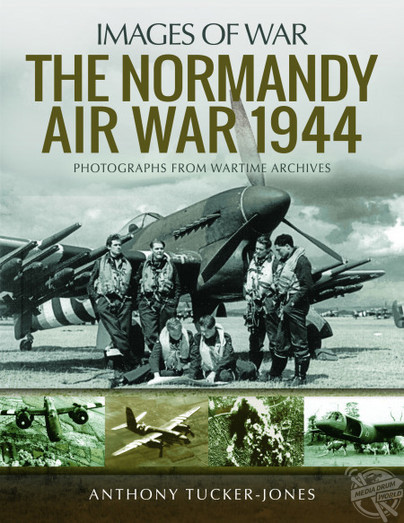
“The ‘Heavies’ began targeting France’s railways and marshalling yards while the medium and light bombers began to attack the strategic bridges over the Seine and Loire and various coastal sites. The intention was to prevent the Germans moving reinforcements into France and to blind them along the English Channel. Many of these attacks went largely uncontested, with anti-aircraft fire posing the greatest danger to Allied pilots.
“Then in the run-up to D-Day fighter-bombers and medium bombers of the British 2nd Tactical Air Force and the US 9th Air Force also conducted an offensive against German railway rolling stock across northern Europe. Carried out during the spring of 1944 its aim was to hamper Hitler’s ability to reinforce his armies in north-western France once Overlord was underway.”
The Allied air forces would go on to cause major problems for the already overstretched German army in France, even though many of Hitler’s defensive bunkers on the Atlantikwall stood up remarkably well to a barrage of allied bombs. However, troops, tanks, railway yards, communication posts, and camps were routinely devastated by RAF and USAAF raids. Allied air forces flew over 14,000 sorties in support of the landings on D-Day.
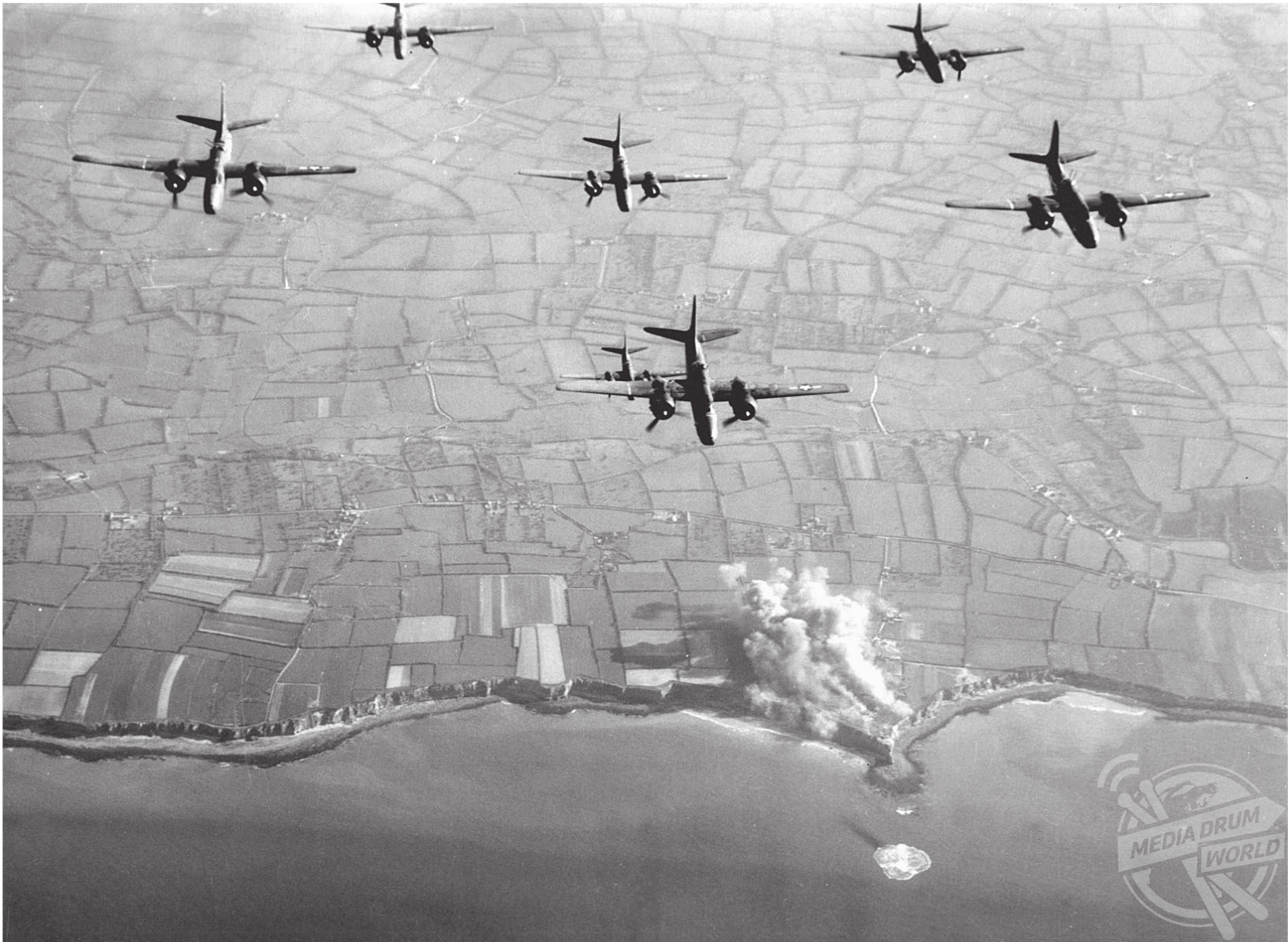
target is shrouded in clouds of smoke. Some of the bombs have overshot and landed in the sea. Mediadrumimages/AnthonyTucker-Jones/PenAndSwordBooks
Short on pilots and desperately attempting to protect Germany’s weapons factories, the Luftwaffe was conspicuously absent for many of the initial stages of the D-Day invasion. An account by Nazi captain Hartdegen shows how ground troops attempted to hold back the Allied flood were thoroughly demoralised by the relentless air attacks and lack of air support.
“Unless a man has been through these fighter-bomber attacks he cannot know what the invasion meant,” he said.
“You lie there, helpless, in a roadside ditch, in a furrow on a field, or under a hedge, pressed to the ground, your face in the dirt – and then it comes towards you, roaring. There it is. Diving at you. Now you hear the whine of the bullets. Now you are for it.
“Our staff car was a gutted heap of metal on the road; it was smouldering and smoking. Corporal Kartheus lay dead in a ditch. As if by a miracle General Bayerlein got away with a few cuts and shrapnel wounds. As for me, I was saved by the culvert.”
Entirely justifiably, history will look back the brave actions of the ground troops who faced Nazi machine guns and cannons – and suffered more than 10,000 casualties during the first assault on the beaches – as the heroes of the Normandy Landings. However, Tucker-Jones is adamant that the flyboys’ contribution should not be underestimated.
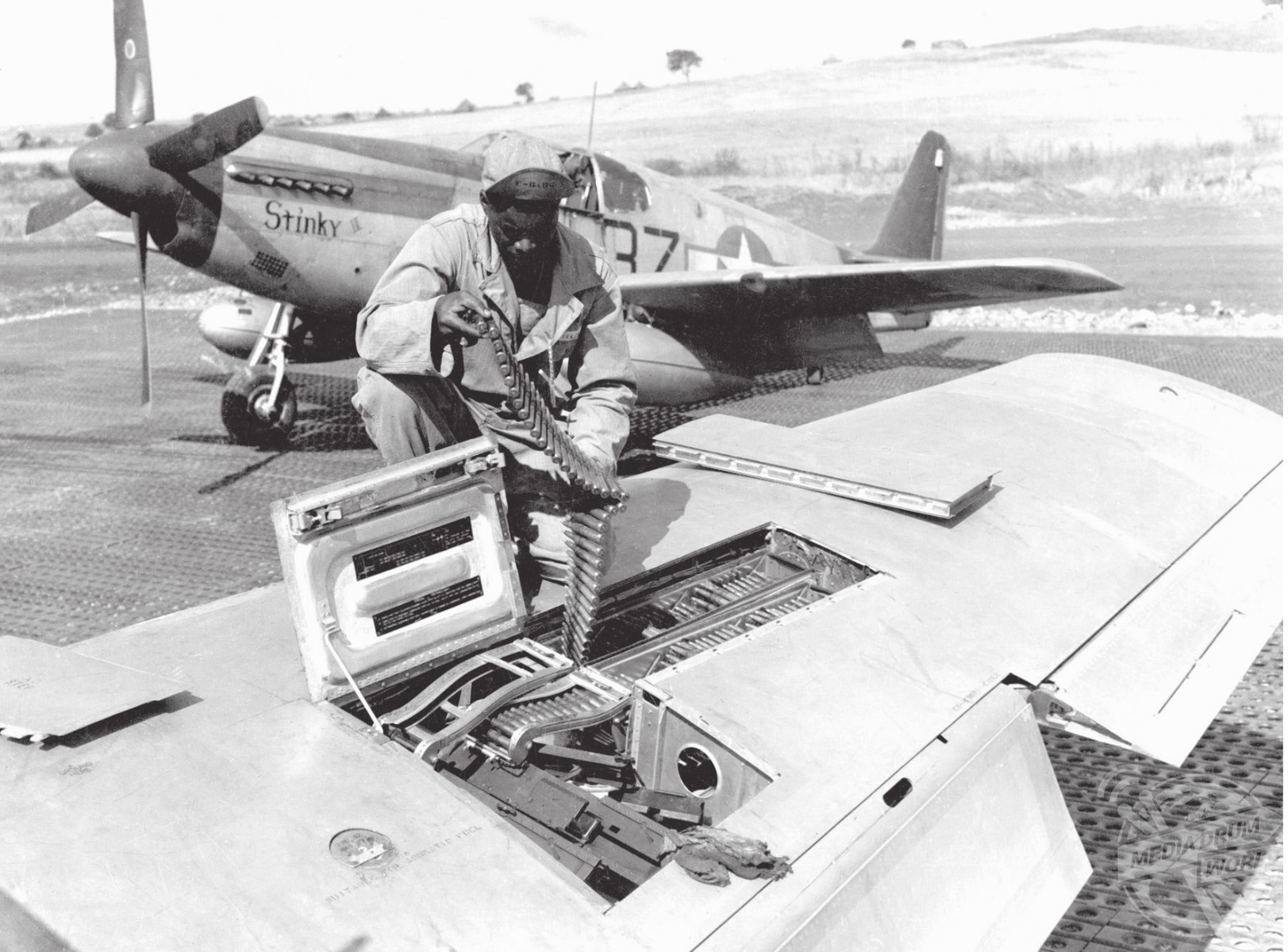
housed in the leading edges of the wings. It could also carry an external bombload of 2,000lbs (907kg). Mediadrumimages/AnthonyTucker-Jones/PenAndSwordBooks
“The support provided by the Allied air armies to the preparations for the invasion of France and the subsequent Normandy campaign is vastly overshadowed by the dramatic and protracted fighting on the ground,” he said.
“Yet Operation Pointblank played a key role in blinding and isolating German forces in northern France in the months preceding Overlord and the D-Day landings. The Allied air forces then supported the seaborne assault and the Allied armies as they pushed inland, most notably by hampering Hitler’s panzer divisions march to Normandy and with the controversial bombing of the ancient Norman cities of Caen and Rouen.
“This book is intended to offer a visual introduction to the enormous Allied air offensive which preceded and supported Operation Overlord. The latter began the liberation of Western Europe from four years of Nazi German occupation. “
On D-Day, more than 132,000 ground troops and 18,000 paratroopers flooded to Normandy to take back North West Europe from the Nazi forces.
Given the incredible scale of the invasion and the dangers, the allied forces suffered more than 10,000 casualties.
The number of German dead ranges anywhere between 4,000 and 9,000.
In the weeks after the landings, including D-Day itself, the Battle of Normandy saw over 425,000 Allied and German troops killed, wounded or missing.






